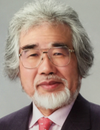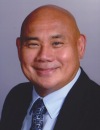08:00 | Morning Coffee and Breakfast Pastries in the Exhibit Hall |
08:30 | Increasing Complexity of a Brain-on-a-Chip Device and Associated Neuronal Cultures
David Soscia, Biotechnology Engineer, Lawrence Livermore National Laboratory, United States of America
An in vitro brain-on-a-chip platform utilizing multi-electrode arrays (MEA) holds promise as a noninvasive experimental approach for evaluating toxicity of chemicals, validating new pharmaceutical drugs, and understanding neurological disease in humans. Often, these devices contain a monolayer of a single purified primary neuronal cell type. While these primary cultures can provide key insights into neuronal response and function, they fail to recapitulate in vivo cellular and molecular complexity as they lack representation and organization from multiple brain regions, as well as supporting glia. Here, we present developments toward a more intricate in vitro system through advanced engineering and increased biological complexity. A novel, removable cell seeding insert was developed to deposit neurons from different brain regions into separate regions of a substrate without the use of permanent physical barriers or chemical surface modifications. Using the insert, we deposited primary rat cortical and hippocampal neurons into distinct regions of a custom 60-channel MEA. Electrophysiology measurements were compared between the two systems over several weeks in vitro. For the regionalized cell cultures, electrophysiology measurements demonstrated that while key firing characteristics were preserved for each neuronal type, some burst features were altered when the cells were co-cultured and able to form direct connections. Separately, we evaluated the cellular activity of primary rat neuronal cultures cultured on the MEA containing additional supporting glial cell types (e.g., astrocytes and oligodendrocytes). For cultures containing glial cells, significant differences in electrophysiology responses were observed as cell culture complexity increased, including an earlier firing response and increased burst rate. Immunocytochemistry was used to identify each cell type, evaluate cell morphology, and assess the phenotypic state of supporting oligodendrocytes and astrocytes. These results suggest that a more complex brain-on-a-chip platform may provide additional insight and relevance to the in vitro brain model and will be validated using chemical challenges. This work was performed under the auspices of the U.S. Department of Energy by Lawrence Livermore National Laboratory under Contract DE-AC52-07NA27344 through LDRD award 17-SI-002. |
09:00 |  A Breathing Human Lung-on-Chip Array For Drug Transport and Safety Studies A Breathing Human Lung-on-Chip Array For Drug Transport and Safety Studies
Janick Stucki, CEO and Technical Director, AlveoliX AG
Organs-on-chip (OOC) are widely seen as the next generation of in-vitro models. In contrast to standard cell culture systems, based on static 2D and 3D tissue systems, they additionally allow to better model the dynamic biomechanical microenvironment of specific organs. However, for the successful implementation of OOC in drug safety assessment and preclinical decision making, it is also important to develop easy to handle OOC systems. The breathing lung-on-chip array is based on a two-part design and equipped with a passive medium exchange mechanism. This allows ease of use and the precise control of the ultra-thin, elastic and porous PDMS membrane. The 96-well plate footprint of the chip and the array of 12 independent lung-on-chips increases experimental throughput and allows compatibility with standard laboratory equipment that highly facilitates its adoption in commercial use. By modelling a healthy alveolus-on-chip, we could show that primary alveolar epithelial cells from patients cultured at the air-liquid-interface and exposed to a physiological cyclic mechanical stress preserves their typical alveolar epithelial phenotype and their barrier function. Long-term co-culturing of epithelial and endothelial cells lead to an increased barrier functionality. Together with our cooperation partners we are working on different lung disease models such as acute lung injury, lung fibrosis and COPD. Additionally, we are constantly adapting our system for new applications such as exposure set-ups or automated stiffness and surfactant measurements.
|
09:30 |  Applications of Brain-Model Technology to Study Neurodevelopmental Disorders Applications of Brain-Model Technology to Study Neurodevelopmental Disorders
Cleber Trujillo, Project Scientist, University of California San Diego
The complexity of the human brain permits the development of sophisticated behavioral repertoires, such as language, tool use, self-awareness, and consciousness. Understanding what produces neuronal diversification during brain development has been a longstanding challenge for neuroscientists and may bring insights into the evolution of human cognition. We have been using stem cell-derived brain model technology to gain insights into several biological processes, such as human neurodevelopment and autism spectrum disorders. The reconstruction of human synchronized network activity in a dish can help to understand how neural network oscillations might contribute to the social brain. Furthermore, we found that the Methyl-CpG-binding protein 2 (MECP2) is essential for the emergence of network oscillations, suggesting that functional maturation might be compromised at early stages of neurodevelopment in MECP2-related disorders, such as Rett syndrome, autism, and schizophrenia. As evidence of potential network maturation, oscillatory activity subsequently transitioned to more spatiotemporally irregular patterns, capturing features observed in preterm human electroencephalography. Our model provides novel opportunities for investigating and manipulating the role of network activity in the developing human cortex.
|
10:00 |  Tailored Chemistry of Nano-Materials for Creating Stable and Robust Platform Environments Tailored Chemistry of Nano-Materials for Creating Stable and Robust Platform Environments
Jeff Chinn, Chief Technical Officer, Integrated Surface Technologies
Surface engineering techniques through to use of specialized molecular chemistries can be used to develop or mitigate a wide range of functional properties, including physical, chemical, fluid flow, electrical, and corrosion-resistant properties. Almost all types of materials including metals, semiconductors, ceramics, polymers, and composites can be coated with molecular films to alter their surface states. Common surface engineered properties of interest often include: control of surface energies (hydrophobicity, hydrophilicity, anti-fouling), chemical grafting (functional groups –NH2, -OH, -COOH, -SH2, etc.), molecular level cleaning, surface activation, adhesion promotions (chemical activation for bonding, immobilizing DNA) and preservation (corrosion inhibitors, moisture barriers). These nano-scaled films can be engineered into many unique bio-compatible coatings. In this talk, we will review the basics of molecular coatings that are commonly used and a technique to applied and to control of surface properties for applications like micro-fluidics, genomics, PCR and others.
|
10:30 | Coffee Break and Networking in the Exhibit Hall |
11:00 |  | Keynote Presentation Scientific, Engineering, and Translational Intersections and Trajectories: Organs-on-Chips, Organoids, Stem Cells, Microfluidics, Well Plates, Acoustics, and Multi-Omics
John Wikswo, Gordon A. Cain University Professor, A.B. Learned Professor of Living State Physics; Founding Director, Vanderbilt Institute for Integrative Biosystems, Vanderbilt University, United States of America
As organs-on-chips, organoids, induced pluripotent stem cells, and multi-omics become more widely integrated into the breadth of biology, pharmacology, and toxicology, it is important to understand the intrinsic capabilities and limitations of each approach and their supporting technologies, how they compete with or complement each other, what questions each is best suited to answer, and the associated challenges and opportunities. A comparison should consider issues of spatial scale, cost, sensitivity, ease of use, and assay speed. Economically significant choices, for example between high and low throughput approaches, single versus multiple organs or tissues, and targeted versus untargeted multi-omic analyses, depend upon the questions being asked, the budget, and the anticipated value of the answers. Ultimately, the greatest return on the substantial investment in these technologies may be amplified by a better understanding of technological and scientific intersections and trajectories and how to optimize the translation of each approach to address pressing scientific and medical questions. |
|
11:30 |  | Keynote Presentation Human Microphysiological Systems for Disease Modeling
George Truskey, R. Eugene and Susie E. Goodson Professor of Biomedical Engineering, Duke University, United States of America
Human microphysiological systems that use cells from individuals with a range of disease can address limitations of existing animal models that incompletely replicate the disease phenotype. We have cultured primary and induced pluripotent stem (iPS) cells to model features of a genetic disease, Hutchison-Gilford Progeria Syndrome (HGPS), a rare, accelerated aging disorder caused by an altered form of the lamin A (LMNA) gene termed progerin, exhibited expression of progerin. Smooth muscle cells and endothelial cells differentiated from iPS cells maintained key features of the mature phenotype for a number of passages. Cells derived from patients with HGPS showed reduced growth rate and increased cell death. Since the major cause of death in HGPS arises from accelerated atherosclerosis, we developed an arteriole-scale endothelialized tissue engineered blood vessel (TEBV) with inner diameter of 800 µm. eTEBVs fabricated with smooth muscle cells from individuals with HGPS show reduced vasoactivity, increased medial wall thickness, increased calcification and apoptosis in comparison to eTEBVs fabricated with smooth muscle cells from normal individuals or primary MSCs. Both the endothelium and smooth muscle cells contributed to disease pathology. Treatment with a number of compounds being considered for clinical trials reversed the disease progression and improved the cellular content and function of the eTEBVs. These results indicate that iPS cells can be differentiated to a functional vascular cells and that human eTEBVs can be used to model diseases in vitro. This approach has been applied to other disease models. |
|
12:00 |  | Keynote Presentation Emerging Organ Models and Organ Printing for Regenerative Medicine
Ali Khademhosseini, Professor, Department of Bioengineering, Department of Radiology, Department of Chemical and Biomolecular Engineering, University of California-Los Angeles, United States of America
Engineered materials that integrate advances in polymer chemistry, nanotechnology, and biological sciences have the potential to create powerful medical therapies. Our group aims to engineer tissue regenerative therapeutics using water-containing polymer networks called hydrogels that can regulate cell behavior. Specifically, we have developed photo-crosslinkable hybrid hydrogels that combine natural biomolecules with nanoparticles to regulate the chemical, biological, mechanical and electrical properties of gels. These functional scaffolds induce the differentiation of stem cells to desired cell types and direct the formation of vascularized heart or bone tissues. Since tissue function is highly dependent on architecture, we have also used microfabrication methods, such as microfluidics, photolithography, bioprinting, and molding, to regulate the architecture of these materials. We have employed these strategies to generate miniaturized tissues. To create tissue complexity, we have also developed directed assembly techniques to compile small tissue modules into larger constructs. It is anticipated that such approaches will lead to the development of next-generation regenerative therapeutics and biomedical devices. |
|
12:30 | Networking Lunch in the Exhibit Hall -- Meet the Exhibitors and View Posters |
13:30 |  | Keynote Presentation Vascularized Microphysiological Systems
Abraham Lee, Chancellor’s Professor, Biomedical Engineering & Director, Center for Advanced Design & Manufacturing of Integrated Microfluidics, University of California-Irvine, United States of America
Introduction to the microfluidic engineering of vascularized microphyiological systems that mimic the in vivo circulatory system at the microscale. This in vitro model system can be used to screen cancer drugs with vascularized micro organs (VMO) and vascularized micro tumors (VMT). |
|
14:00 | Organs-on-a-Chip Mimicking Physiological Parameters For Pharmacokinetic Studies
Hiroshi Kimura, Professor, Micro/Nano Technology Center, Tokai University, Japan
Maintenance and replication of physiological functions of cells cultured in vitro are extremely difficult in conventional cell-based assay methods during life science and medical applications. Microfluidics is an emerging technology with the potential to provide integrated environments for maintenance, control, and monitoring the environment around cells. We work mainly in fundamental technologies of a microfluidic device and system, and their applications to biological sciences including Organ(s)-on-chips. In this presentation, we introduce integrated microfluidic platforms, which allow precise control of the cell culture environment on Organ(s)-on-chips. A physiological environment in vitro can be replicated by fabrication of microstructures and control of microfluidics in these devices. Moreover, functional components, such as sensors, valves and pump, can be integrated into the devices by microfabrication methods. We performed cell-based assays to evaluate the function of these devices. Because cells cultured in vitro could be maintained and measured, these devices may be applied to medical, pharmaceutical and biological sciences. |
14:30 | Striated Muscle Disease Modeling on a Chip
Megan L McCain, Assistant Professor of Biomedical Engineering and Stem Cell Biology and Regenerative Medicine, University of Southern California Keck School of Medicine, United States of America
Cardiac and skeletal muscle research has traditionally been limited to model systems that lack throughput and/or relevance to native human tissues, such as animal models or simplified cell cultures with minimal functional outputs. The reliance on these platforms has limited our ability to establish human disease mechanisms, identify effective therapeutic targets, and efficiently screen drugs for functional efficacy. In this talk, I will describe our efforts in integrating tunable biomaterials, microfabrication techniques, and human cells (including stem cell derivatives) to engineer scalable models of human cardiac and skeletal muscle tissues with quantitative functional outputs. I will also describe how we are leveraging these platforms to model acquired and inherited forms of striated muscle diseases. |
15:00 | Construction of Organ-on-a-Chip Models For Pathological/Pharmacological Research
Shengli Mi, Associate Professor, Biomanufacturing Engineering Laboratory, Tsinghua University-Shenzhen, China
Organ-on-chips refer to the cell culture devices based on microfluidic technology to simulate the physiological functions and behaviors of tissues and organs through arranging living cells in a micrometer-sized chamber and the continuous supply of cell culture media. Organ-on-chips haves two main application directions: one is to study physiological or pathological mechanisms, and the other is to perform drug research and development based on the functions of organs. Here we mainly introduce our work from three aspects: the construction of a liver model based on a microfluidic chip, the microfluidic devices for tumor migration research, and the construction of a multi-organ system for liver metabolism anticancer drug testing. |
15:30 | Afternoon Coffee Break and Networking in the Exhibit Hall |
16:00 | Engineering Control for Endothelial Permeability in Microfluidic Vessel Bifurcation System
Shaurya Prakash, Associate Professor, Department of Mechanical and Aerospace Engineering, The Ohio State University, United States of America
Endothelial barrier function is known to be regulated by a number of molecular mechanisms; however, the role of biomechanical signals associated with blood flow is comparatively less explored. Biomimetic microfluidic models comprised of vessel analogues that are lined with endothelial cells (ECs) have been developed to help answer several fundamental questions in endothelial mechanobiology. However, previously described microfluidic models have been primarily restricted to single straight or two parallel vessel analogues, which do not model the bifurcating vessel networks typically present in physiology. Therefore, the effects of hemodynamic stresses that arise due to bifurcating vessel geometries on ECs are not well understood. Here, we introduce and characterize a microfluidic model that mimics both the flow conditions and the endothelial/extracellular matrix (ECM) architecture of bifurcating blood vessels to systematically monitor changes in endothelial permeability mediated by the local flow dynamics at specific locations along the bifurcating vessel structure. We show that bifurcated fluid flow (BFF) that arises only at the base of a vessel bifurcation with a stagnation pressure of ~38 dyn/ cm2 and approximately zero shear stress induces significant decrease in EC permeability compared to the static control condition in a nitric oxide (NO)-dependent manner. Similarly, intravascular laminar shear stress (LSS) (3 dyn cm-2) oriented tangential to ECs located downstream of the vessel bifurcation also causes a significant decrease in permeability compared to the static control condition via the NO pathway. In contrast, co-application of transvascular flow (TVF) (~1 µm s-1) with BFF and LSS rescues vessel permeability to the level of the static control condition, which suggests that TVF has a competing role against the stabilization effects of BFF and LSS. Recent investigations have also shown use of external electrical stimulation modulates endothelium permeability. These findings introduce BFF at the base of vessel bifurcations as an important regulator of vessel permeability and suggest a mechanism by which local flow dynamics and engineering controls can potentially assist in manipulation of vascular function in vivo. |
16:30 | Leaf-Inspired Microvascular Patterns
Kara McCloskey, Associate Professor, University of California-Merced, United States of America
The vascularization of tissue grafts is critical for maintaining viability of the cells within a transplanted graft. A number of strategies are currently being investigated including very promising microfluidics systems. We explored the potential for generating a vasculature-patterned endothelial cells (EC) that could be integrated into distinct layers between sheets of primary cells. Bioinspired from the leaf veins, we generated a reverse mold with a fractal vascular-branching pattern that models the unique spatial arrangement over multiple length scales that precisely mimic branching vasculature. By coating the reverse mold with 50µg/ml of fibronectin and stamping enabled selective adhesion of the human umbilical vein endothelial cells (HUVECS) to the patterned adhesive matrix, we show that a vascular-branching pattern can be transferred by microcontact printing. Moreover, this pattern can be maintained transferred to a 3D hydrogel matrix and remains stable for up to 4 days. After 4 days, HUVECs can be observed migrating and sprouting into Matrigel. These printed vascular branching patterns, especially after transfer to 3D hydrogels, provide a viable alternative strategy to the prevascularization of complex tissues. |
17:00 | Close of Conference |




















